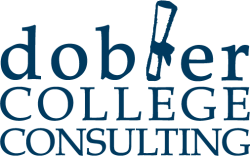A Conversation About College Part IV
This is Part IV of a running series called, “A Conversation About College” which covered some of the more pressing questions about college admissions that were asked at a workshop I conducted a few weeks ago at Sacred Heart Church in Southbury, Connecticut:
Academic scholarships, which are also known as merit scholarships, typically are awarded to students who have excelled academically while in high school. However, not all schools will restrict their merit money to students who finish in the top 10%. Some schools will offer money in tiers where a student in the top 10% may get more money than a student in the top 20%. Your best bet is to use a website like MeritAid.com where you can research individual schools to see what they offer and who qualifies. The information may not always give you all the details, but then that is a great question to ask on a college visit or when your son or daughter meets an admissions counselor at a school visit or college fair.
Private scholarships are tricky. They are typically rather small and the search can really chew up a lot of your son or daughter’s time which should be otherwise spent on priorities like school work, athletics or whichever activities they truly enjoy. In fact, the average private scholarship is just $2500 and less than 7% of graduating senior receive one. Having said that, FastWeb.com is a website where your son or daughter can create a profile and then be notified when scholarships which meet his or her criteria become available. I would also have them check with their school counseling office and the town library. Both should have resources for local scholarships as well as application information.
Q: Financial aid forms – how to best complete them?
There are two financial aid forms, the FAFSA and the CSS Profile. The FAFSA (Free Application for Federal Student Aid) is the federal form required to be considered for aid at any institution. The CSS Profile is only required if your child chooses to apply to one or more of some 250+ private schools that require it. Check with each school he or she is considering so that you know if you need to complete both. Once you know which forms you need to fill out, you need to know that you cannot fill out the FAFSA until January 1st of the student’s senior year while the Profile can be filled out as soon as your child has identified schools where he or she will be applying.
Another great resource dedicated to everything in the financial realm of the college admissions world is a blog by Lynn O’Shaughnessy called, The College Solution. I tell all my students and their parents that it is a must-read.
If you have any thoughts you would like to share on “A Conversation About College,” please use the comment box below – I would love to hear from you! You can also email me directly at eric@doblercollegeconsulting.com.
Eric Dobler is the president and founder of Dobler College Consulting. Follow him on Twitter.

